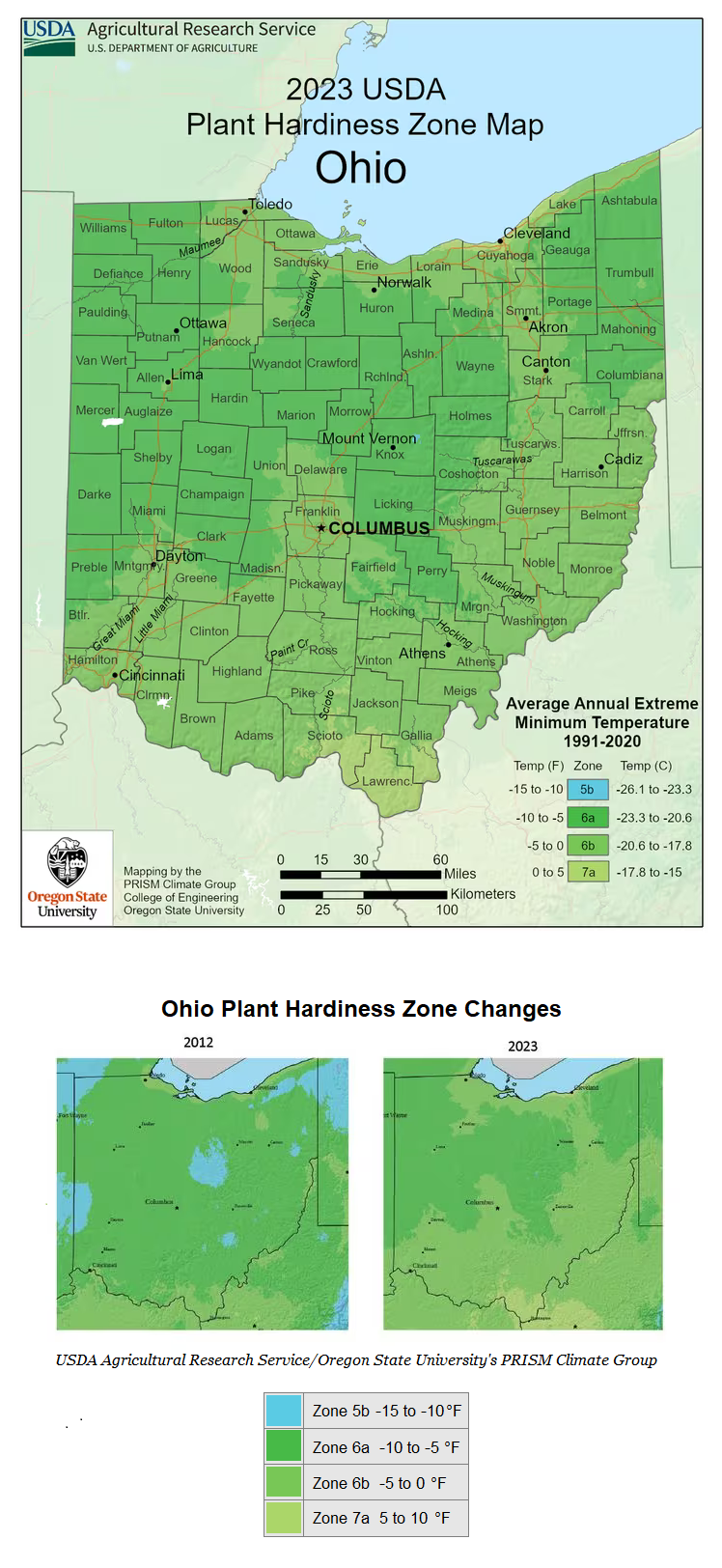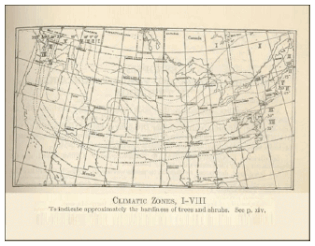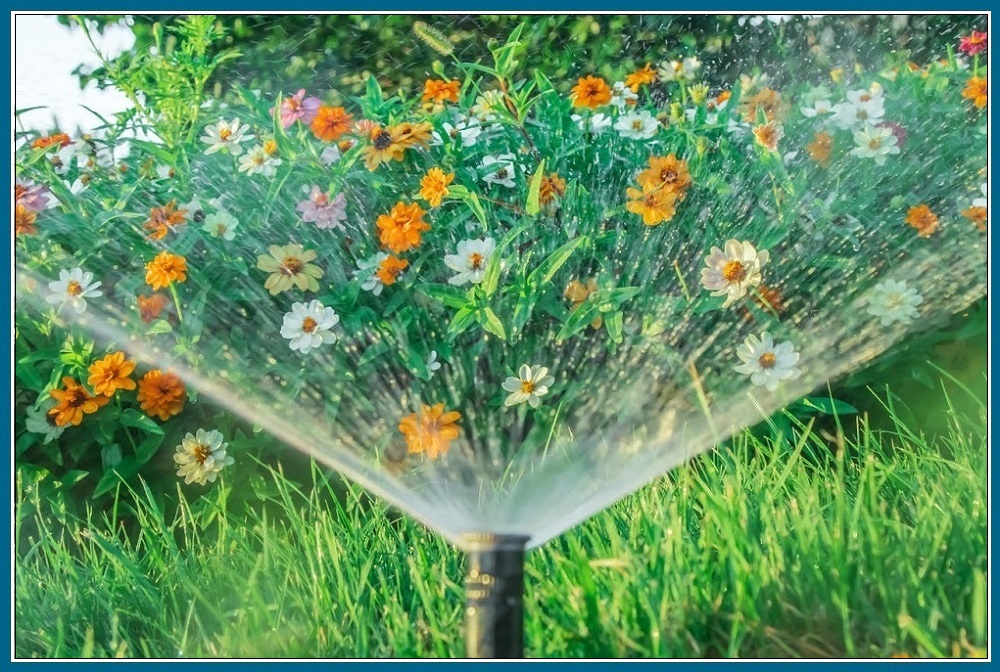Using New USDA Zones to
Market Your Business
The USDA’s new plant hardiness zone map (PHZM) places Ohio in warmer sectors. What will that mean for irrigation and landscape contractors?
According to the new map, the average lowest winter temperature across the country is now 2.5 degrees warmer than it was in 2012, the last time such a map was charted. Viewable in an interactive format, the 2023 hardiness zone map was created digitally, relying on detailed and more precise data than before. Map users can zoom in on specific ZIP codes and locate roads within each zone.
Ohio’s New Hardiness Zones
Like the 2012 PHZM, the new version shows Ohio falling almost entirely within Zone 6, with an average lowest winter temperature between minus 10 and zero degrees Fahrenheit. But Zone 6b now encompasses a considerably larger area than it did in the 2012 map.
Much of central Ohio, along with areas to the northeast and northwest, still lies in Zone 6a, which ranges from minus 10 to minus 5 degrees. (According to the 2023 map, the only remaining pocket of Zone 5b is in northeastern Knox County.)
The warmer Zone 6b ranges from minus 5 to zero and now includes much of southern Ohio. But it also includes a section of Northern Ohio west of Toledo and extending to Pennsylvania, which is warmed by the moderating effects of Lake Erie. As a result, Ohio’s Zone 6b is significantly larger than the 2012 map indicated.
Warmer still is Zone 7a, making its first appearance in Ohio. This zone, ranging from zero to 5 degrees, now includes a narrow swath of Greater Cleveland just inland from Lake Erie and the southernmost tip of the state.
–Article Continues Below–

Impact on Irrigation and Landscaping
Regions across the state have warmed, making them suitable for plant species that previously could not have survived there. Here are some of the ways warmer regions can impact landscape and irrigation professionals:
- Longer growing seasons and the likelihood of increased heat will compel homeowners to consider more efficient water usage and adopt more sustainable irrigation practices.
- Extended growing seasons require adjusting planting schedules and vigilantly maintaining plants during the longer summers.
- Homeowners and landscapers may choose from a broader range of plants, allowing for more diversity within a landscape.
- Landscapers must proactively monitor and manage increased pest and disease challenges caused by warmer temperatures.
Promoting Your Business Through the New PHZM

Evolution of
the PHZM
1927 – Harvard University publishes the first known U.S. map with eight climatic zones in the Manual of Cultivated Trees and Shrubs Hardy in North America.
1928 – USDA publishes a map depicting average annual minimum temperatures in 11 zones across the United States.
1938 – Harvard University publishes enhanced plant hardiness map using previously unavailable temperature data from the U.S. Weather Bureau.
1948 – Harvard University publishes a revised and updated map, incorporating new weather data.
1960 – USDA develops and publishes the first official Plant Hardiness Zone Map [PHZM], which eventually became the standard for assessing plant hardiness in the United States.
1990 – USDA publishes updated PHZM, utilizing data from about 8,000 weather stations over a 12-year period.
2012 – USDA develops the first digital PHZM, utilizing 30 years of weather data.
2023 – USDA publishes revised digital PHZM, utilizing data from 13,412 weather stations over a 30-year period.
Source: Medium
You can help your customers understand the ramifications of the new PHZM while also promoting your irrigation business. Here’s how:
Explain the Map
Familiarize customers with the PHZM. Explain to them how the local climate is changing, offering more plant diversity and longer growing seasons, but also likely requiring more efficient irrigation – not necessarily more water. Provide them with a link to the updated interactive map so they can drill down to their local area.
Offer a Variety of Options
Stay current on the newest and most efficient smart controllers and system components, and offer various options for your customers to consider. Maintaining a strong relationship with your local irrigation distributor will go a long way toward ensuring familiarity with the latest products.
Incentivize
Offer rebates or other incentives to encourage action (such as retrofitting inefficient irrigation systems with smart systems). Inform customers of any rebate programs available through WaterSense, their local water utility, or irrigation system manufacturers.
The 2023 PHZM update highlights the impacts of climate change on our local environment, presenting both new opportunities and challenges. Responding proactively to these changes can help ensure sustainable landscapes while also promoting your business as a green industry leader.
Sources:
Featured Image: Adobe, License Granted
USDA
Cleveland.com
Medium






